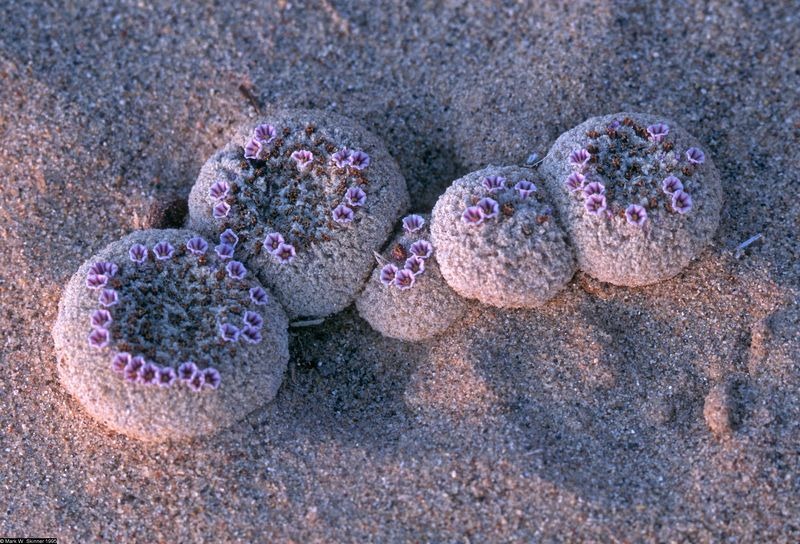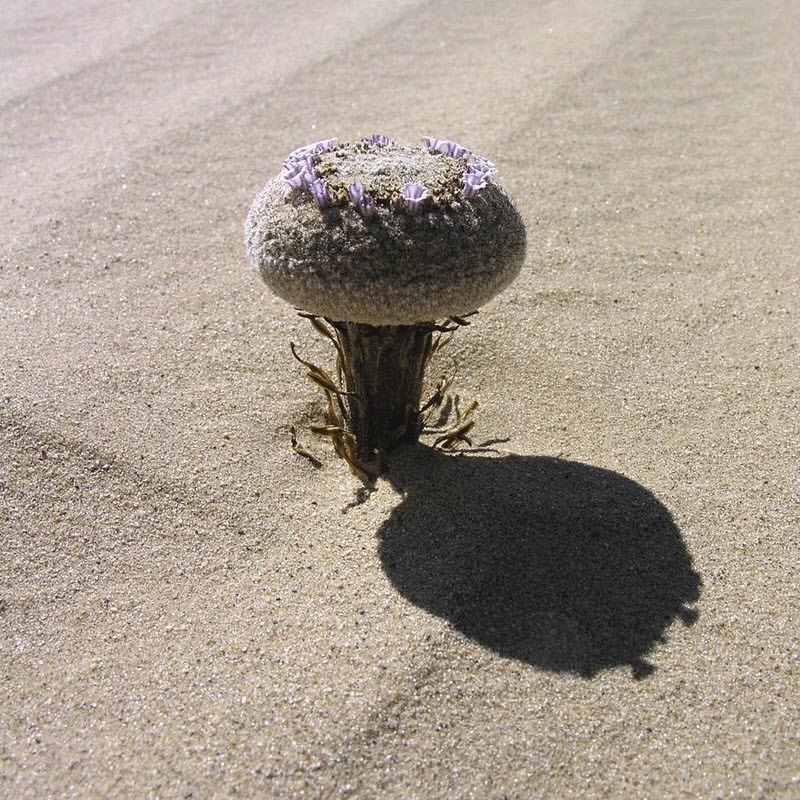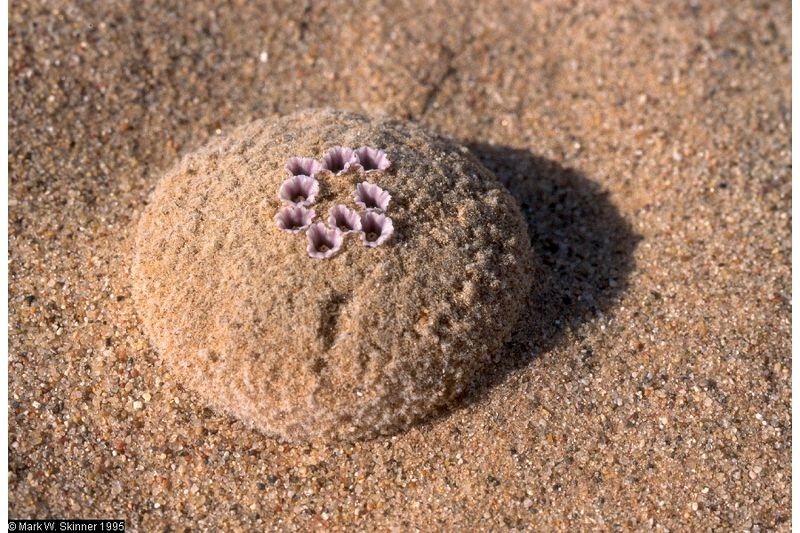Pholisma sonorae, commonly known as sand food, is one of the most bizarre wildflowers of North America. Growing out of sand dunes, the flower has a fleshy stem that extends two meters below the surface and emerging above as a small rounded or ovate form. If enough sand is blown away, the top of the stem may get exposed and the flower appears somewhat like a mushroom. During early spring, the round head bears small centimeter-wide flowers which are pink to purple in color with white margins.
Pholisma sonorae lacks chlorophyll. To survive it attaches to the roots of various desert shrubs to obtain nutrients. Incredibly, the host plants do not appear to be depleted by Pholisma infestation, and some Pholisma plants weigh more than their host plants.

Photo credit: plants.usda.gov
It’s remarkable that the seedlings of these unusual root parasites are even able to find the host root buried deep in the sand. A closely related species (Pholisma arenarium), which exhibit similar parasitic behavior, does this by sending out "pilot roots" two feet below the surface of the sand. When they reach the vicinity of a host shrub, the pilot roots send out special "haustorial roots" which connect and penetrate the host root. The haustorial connection absorbs carbohydrates and amino acids manufactured by the photosynthetic host shrub. The plant may be assisted by other factors such continually shifting sand dunes that help the seeds to travel further down into the sand, or they may be carried by harvester ants and by rodents that burrow into the dunes under host shrubs.
Pholisma sonorae is found in only a few locations in the Algodones Dunes of southeastern California and adjacent Arizona, and in the sand dunes of El Gran Desierto in Sonora, Mexico. The native American tribes used to eat their fleshy stem, either raw or roasted over a campfire.

Photo credit: USFWS/Flickr

Photo credit: botany.org

Photo credit: plants.usda.gov

Photo credit: plants.usda.gov
Sources: Wikipedia / waynesword.palomar.edu / www.centerforplantconservation.org



Comments
Post a Comment